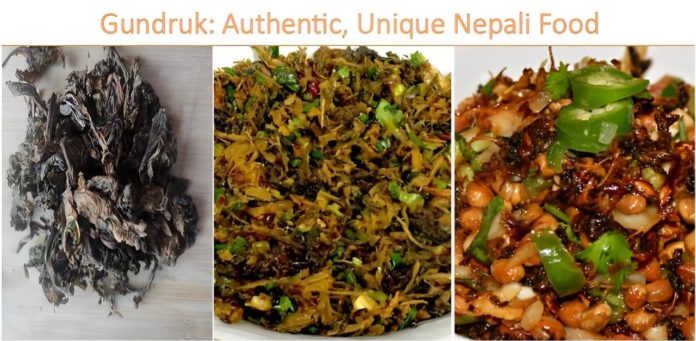Gundruk, which is generally known as the fermented leafy green vegetable in English, is one of the most famous vegetable in Nepal. It is commonly made from mustard, radish and sometimes from cauliflower leaves too. This dried leaves takes the place, almost all the Nepali Kitchen. This cuisine is not only the delicious, but also the most unique tangy flavors, Interesting Aroma, Healthy and easy to make.
Gundruk is a fermented leafy green vegetable of Nepali origin with popular preparations in Nepal, Sikkim, Bhutan, a few regions of India, Myanmar, and other parts of the world. Annual gundruk production in Nepal is estimated to be 2,000 tons (Source: ICIMOD), with most households undertaking this production. It is also known as the National Side Dish Food of Nepal.
Why is Gundruk Famous in Nepal?
Gundruk has rich history, nutritional value, and versatility in various dishes that is why Nepal loves Gundruk. It is a smart way to preserve food, it enables a household to continue getting leafy greens significance all year round. An example of such period happens during off seasons.
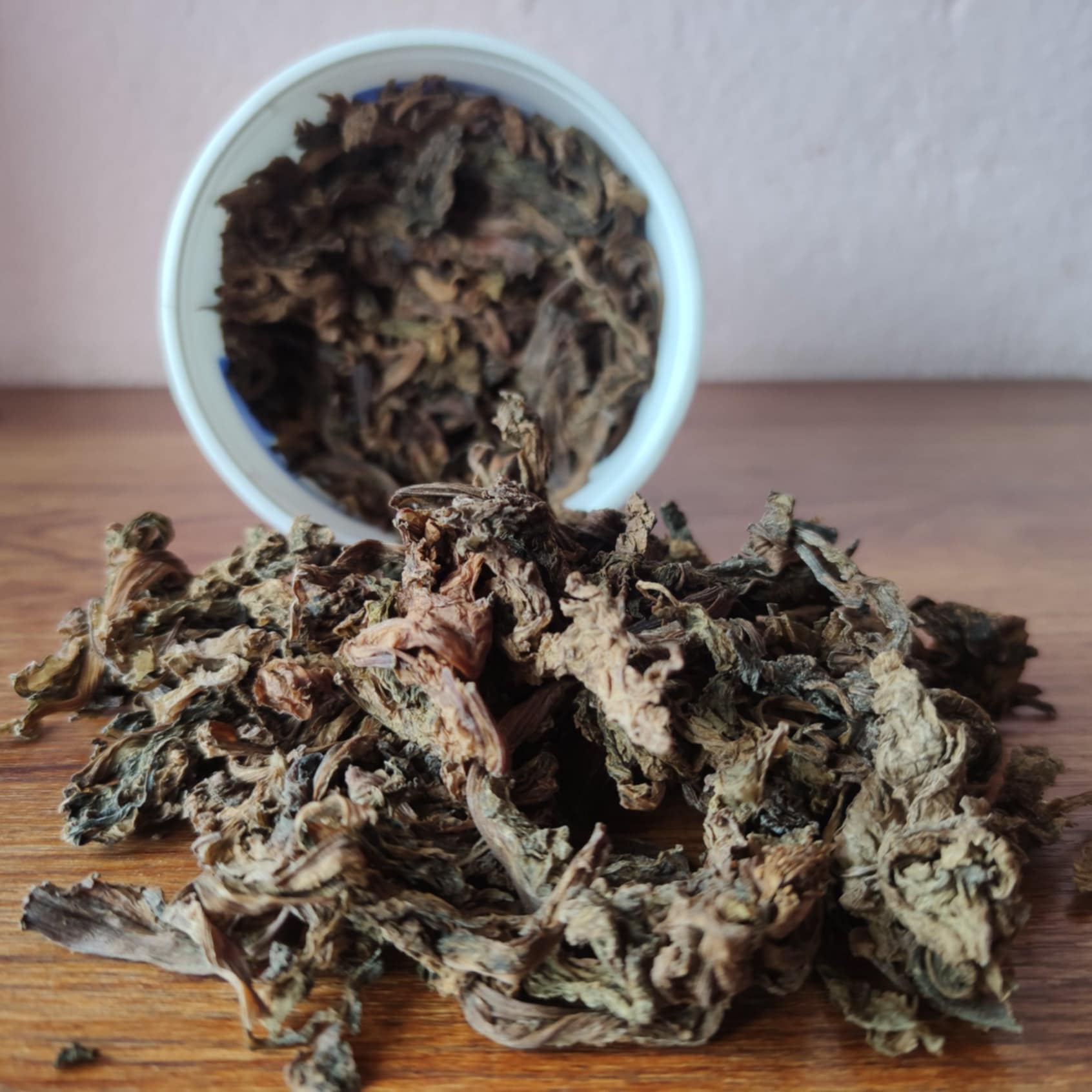
Especially in the mid or high hills areas, when the season of the Mustard, Cauliflower, Radish started, we could find those leafy vegetables everywhere. But after the season ends, there is lessly available of any green vegetables in the dry season. But i would like to say that, Nepalese are quite smart and intelligence, that they found the alternative and unique way to fulfill the shortage of vegetables in th dry season.
In many countries, like USA, England, Canada, Australia and many others, who have invented the green house, where they can produce the green vegetables at all the time. Although there is no any specific season inside the green house, so they could always get fresh and green vegetables. But in Nepal, they preffered to store the vegetables instead of making green house. Crazy Right? 😁. Anyway, they used thier brains actually. As we see little back to the Food history of Nepal, we could easily feels that this Gundruk is one of the greatest inventions for them. The interesting things is this process are matched with the fermentation Process of Louis Pasteur 1857.
Also Read: Rajma (Kidney Beans) – Homemade Nepali Recipe
Making Process of Gundruk
In the month of October and November, which is autumn season, as per the Nepalese Calander, is the peak season of producing the green leafy vegetables. At the ending time of the November, Nepalese People harvested those leaves and clean them properly with clean water. After cleaning the leaves, strain the water from it and then, spread it to the sunlight to let them turned yellowish. It takes usually 1-2 days according to the exposer of the sun.
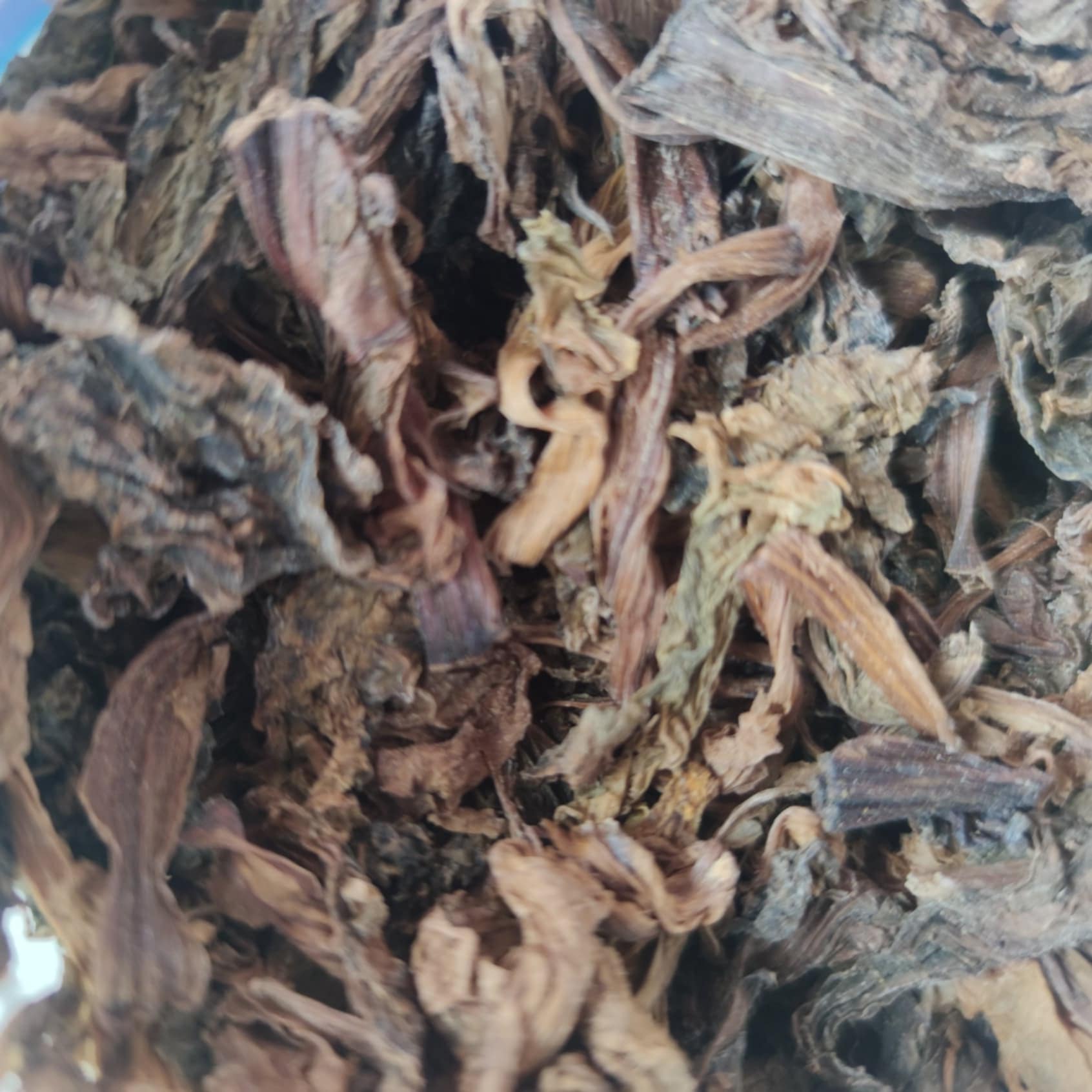
After 2 days, when the leaves are soft, yellow and it contains only 40% of water in it, cut it into the half inches each. It will better to wash again after the cut and then pour it tightly in the air tight container and leave it under the sun. After 2-3 days, let’ the gas out, which is came from the fermentation process inside it. Most of the people are waited 2 weeks and some days more to complete this process. After 20 days, remove it from the container and make dry for 5-7 days in a shade.
How does Gundruk made in Nepal?
- Harvesting Leaves: First the fresh mustard, radish, or cauliflower leaves are harvested and washed it properly.
- Wilting: The leaves are left to wilt for a day or two to reduce moisture and letting them to turned into yellowish. And then cut it into the appropriate size.
- Fermentation: And this cut wilted leaves (Yellowish Leaves) should tightly packed in a container and covered it properly. Now it is going to the natural fermentation process and ready to after several days.
- Drying: After the fermentation process, the leaves should spread out in the sun to dry completely. Make sure the sun drying area should clean and dustproof.
- Storage: The dried gundruk is then stored in airtight containers for use throughout the year.
Nutritional Values of Nepali Style Gundruk
It is highly contains Dietary fiber, vitamins (especially Vitamin C and A) and minerals like iron and calcium are abundant in Gundruk. The fermentation of this food encourages its probiotic concentration thus, it could be very good in having a healthy stomach.
Gundruk Mixed Food Items
It can be used in a variety of dishes, enhancing their flavor and nutritional value:
-
Gundruk Soup:
Th9s is a traditional Nepalese soup, which is made with tomatoes, onions, garlic, and some spices. Cut the onions in long slices, also some cloves of garlic. Put it in the pan with hot oil and some Fenugreek. After the onion and Garlic changed color to golden, add the chopped tomatoes and other spices (Turmeric, Chilli flakes, Cumin and Coriander Powder, Garam masala Powder). Then add 2 cup of water and cover it for 5 minutes in low-medium heat.
-
Gundruk Pickle Nepali Style
A spicy pickle made with fermented gundruk, mustard oil, and various spices. Soak it into the water and prepare the other items, like: roasted Perilla Seeds or Sesame Seeds.
Drain the water from the soaked gundruk and then put it in a bowl then add those spices, like turkeric, perilla seeds and Salt. Fry the fenugreek and red chilly with the mustard oil in the pan. After the fenugreek sees turned into black, pour this oil into the bowl over the spices. Now mix it well and you can adjust the spices according to your taste.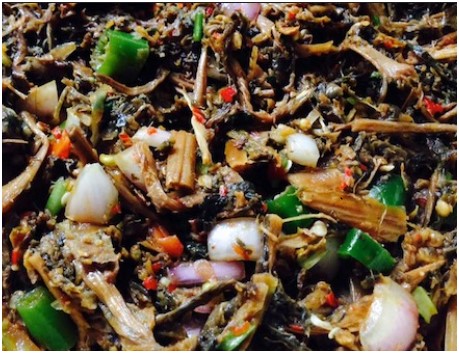
Nepali Gundruk Pickle, Image Source; The Nepali Food Vlog -
Gundruk Bhatmas:
A mixture of gundruk and soybeans, often served as a side dish. Which is mostly famous in Newari Culture and Thakali Cuisine. This is also easy to make, follow these steps to make the authentic Gundruk Bhatmas Achar. First soak little gundruk in a small bowl and then roast the soyabean in a pan until is became crunchies and then take it out and let it be cool.
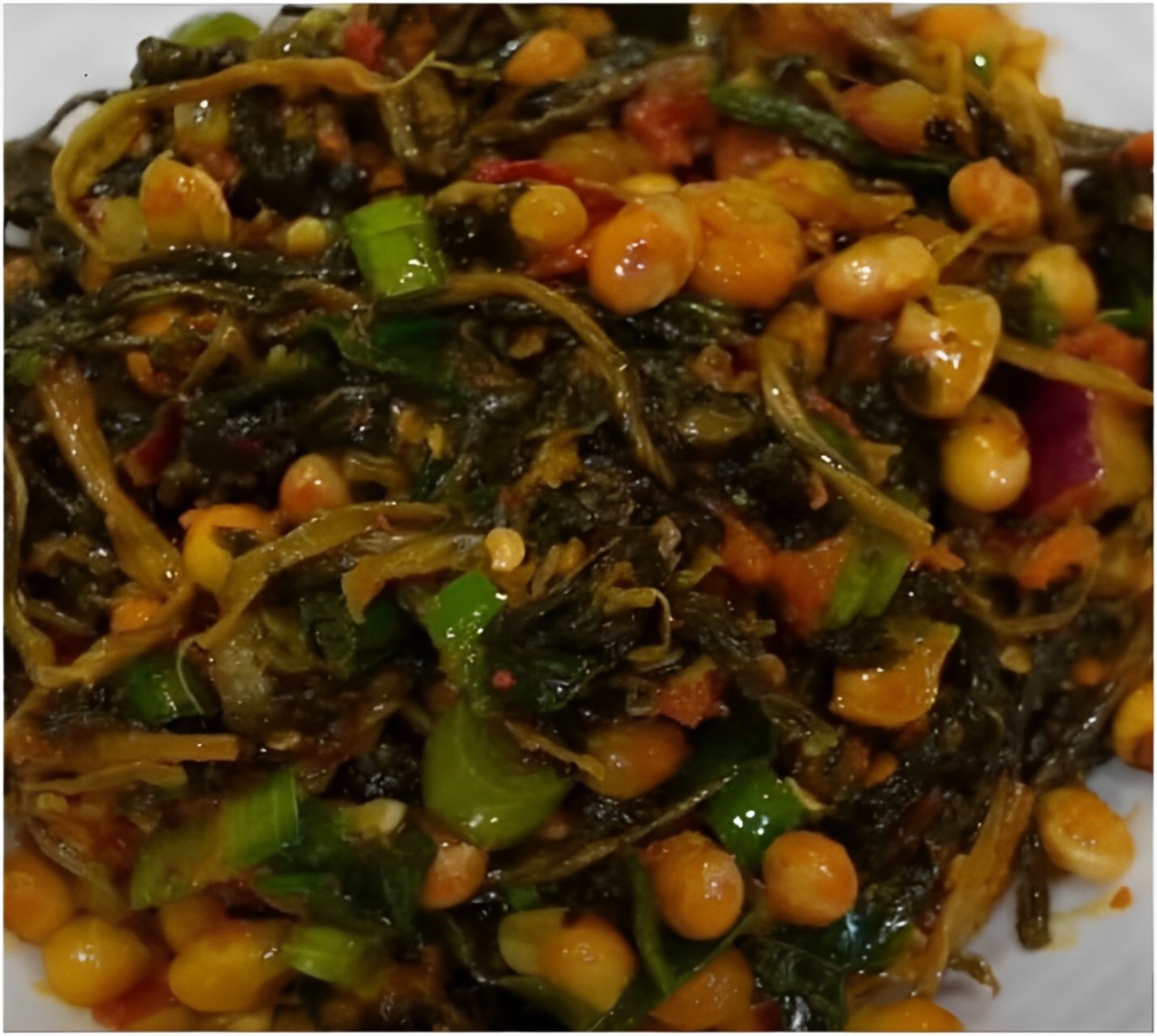
Nepali Gundruk Achar, Image Source: Lalmon Next use the stone grinder and add 1 red chilli, 2 green chilli, 2 clove of garlic and grind it for making the fine paste. Now bring the gundruk and drain the excess water and put it in a bowl. Mix all the ingredients well and add the roasted soyabeans at the last mix well, also sprinkle some salt according to your taste. Now it’s ready to serve.
-
Nepali Style Gundruk Curry:
A savory curry made with potatoes, tomatoes, Onion and gundruk. Firstly Soak the Gundruk in a bowl, then cut the potatoes, Onions into the long slice and also cut the tomatoes into dice. Also make a paste of Garlic and Ginger with adding some chilli.
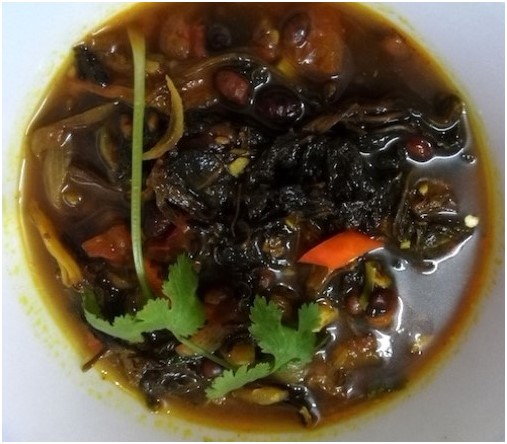
Nepali Style Gundruk Curry Heat up the pan and add 2 tbsp pure mustard oil along with 5-7 fenugreek and 2 red chilli. After the oil is hot fry the potatoes for 2 minutes and add the onions as well. Stir it until becaming the golden brown then add the soaked Gundruk with removing the excess water from it.
Stir it for around 2 -3 minutes and add the masala paste salt. Then you can add the tomatoes and stir for a little more. Add 2 cup of water in it and simmer it for another 10 minutes with covering. While serving you can add some Coriander leaves or basil to enhance the taste. (Recipe Source: Chef Sabin)
Gundruk is not solely a food, but also a sign of creativity and perseverance in the Nepalese food industry and a basic ingredient that complements many other traditional dishes with taste and nutrients, that being said whether cooked as a pickle, curry, or soup, gundruk will always be found in all meals prepared by the Nepalese people.
FAQs
What leaves are used to make Gundruk?
Especially mustard leaves, radish leaves or even cauliflower leaves are used to make gundruk. But sometimes, spinach also good for making gundruk.
How is Gundruk fermented?
The dry leaves are themselves placed into the container, which is to remain half sealed and then allowed to stay for a period of several days to ferment before they are eventually sundried.
What are the health benefits of Gundruk?
It contains loads of fiber, minerals and vitamins as well as probiotics that helps to make our guts healthy. Also the gundruk soup and curry are very useful, easy in the winter, which is also helps to keep us warm.
Can Gundruk be used in modern recipes?
I think yes !, It has a unique taste and added nourishment to any soup or curry is realized whenever gundruk is used.
